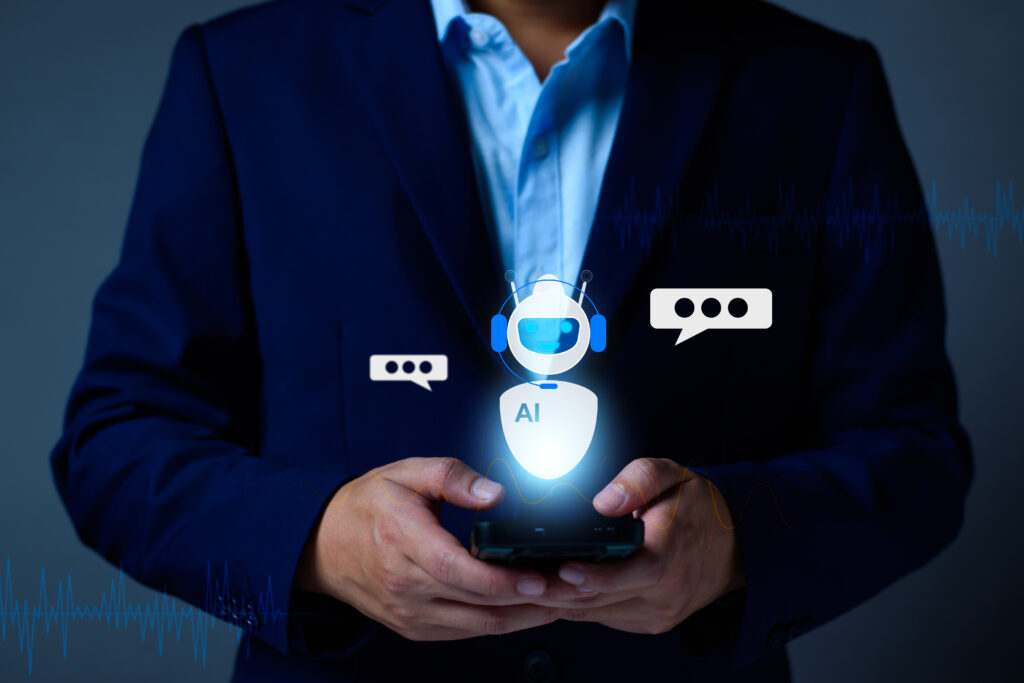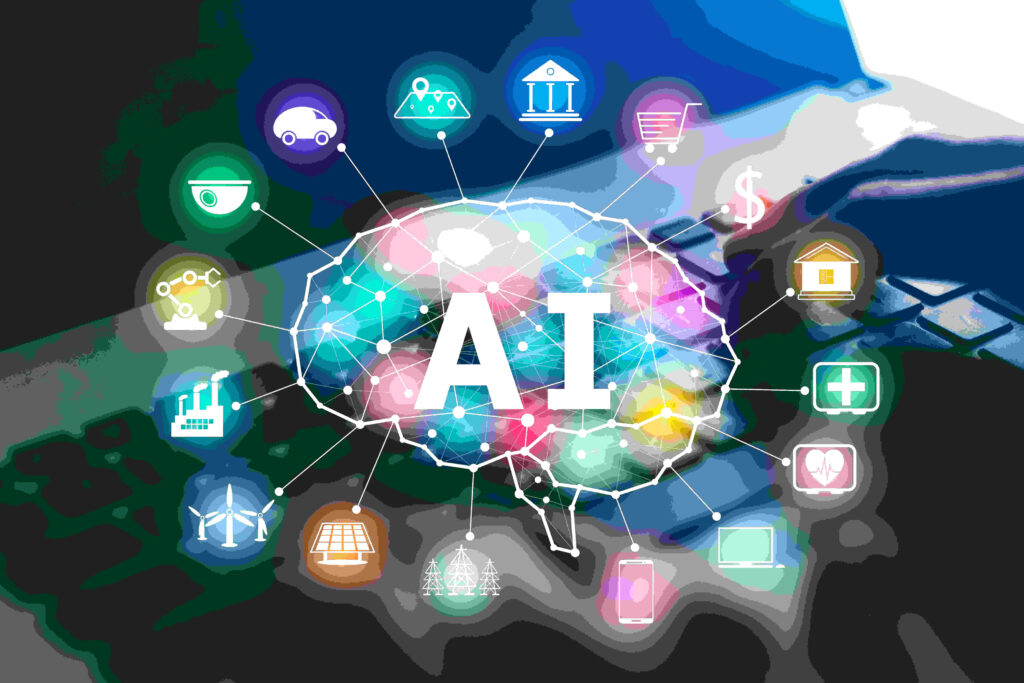Table of contents:
We’ve all come to accept AI technology in our lives and businesses. They’re working for us everywhere, from chatbots to prompt generators like ChatGPT and Gemini. Their appeal is simple: AI tools perform tasks much better than humans. And now, the new rave is AI agents—advanced tech that does basically all we do, only better.
So, it’s no surprise you’d want to jump on this trend. But first, what is an AI agent, and how can they work for you? This article will show why AI agents lead the pack and what makes them tick. You see the full range of how to create one for your business.
What is an AI agent?
An AI agent is no different in its core from the average computer program. But it’s far more advanced because it can handle tasks independently. AI agents are autonomous systems, so they can experience their environment, learn from it, and make decisions. Sure, they still need our supervision, but most times, they still function even if we’re not involved.
AI Agent Types
Like every tech, AI agents come in different types. Your choice, however, depends primarily on where and what you work on. Still, you can break down AI types into these general categories:
- Simple reflex agents: These types carry out tasks using pre-programmed rules. They almost seem to have a fixed set of reactions to their environments. For AI agents, simple reflect types are the most basic.
- Model-based reflex agents: These types operate using an internal model of their surroundings. They use this as a reference, returning to it before making a decision. They’re slightly more complex than their simple reflex cousins.
- Goal-based agents: These types have distinct goals set in their programming. They focus every action on achieving these specific goals. This is why they strategically plan various scenarios to achieve their objectives.
- Utility-based agents: These types pick options based on a pre-set amount of usefulness. This means they consider a variety of factors to determine whether a decision is relevant or not.
- Learning agents: These types are the most advanced options. They gather data from their experiences and improve by learning from them.
Regardless of their types, you’ll find AI agent use cases across different businesses. These tools find application in diverse sectors, ranging from commerce to healthcare and real estate. An AI agent can make a great customer service tool or digital assistant. Or, they create automated consultants and voice agents for e-commerce and marketing.
How an AI agent works
All AI agents operate under a general, basic principle. So, before you build one, you’ll need to understand how they work. Once you learn this, creating and monitoring an AI intelligent agent becomes much easier.
Data Training
Data is the lifeblood of AI agents, and they need massive amounts of it. As long as the data is relevant to the goal, the AI agent will consume it and transform it into something valuable. For example, in retail, an AI agent will thrive on data from customer purchases and sales traffic.
Data Pattern Finding
As the AI agent feeds off the heavy flow of data, it learns to pick out patterns. Then, it studies these patterns to get hints on how everything works in its environment. For example, if a real estate AI detects clients from sunny states like Nevada or Texas, it may offer more properties with patios.
Action Performance
AI agents then use the data and patterns to make decisions in their environment. But these actions depend on whether you give the instructions or they act on what they learn alone. For instance, you can program your AI intelligent agent to respond to troubleshooting inquiries with simple solutions. However, when faced with a complex problem, the AI intelligent agent can refer it to human experts.
Building an AI Agent That Works For You
Now that you’ve seen how AI agents work, you can start preparing to build one. However, these steps must be taken for your business to succeed:
- Define its purpose and surroundings.
- Choose the relevant tools and tech.
- Set up an expert development team.
- Compile essential data.
- Design the agent.
- Run agent tests.
- Deploy and observe the agent.
Let’s break down these steps.
Define its Purpose and Surrounding
First, decide the kind of environment your AI agent will be working in. You can be sure your building can handle its surroundings this way. For instance, if you build your AI agent for a website, it may struggle when added to an app.
You also want to make sure your agent in AI can handle the tasks you’ve got. And since this varies with each niche, it helps to be very sure beforehand.
Choose the Relevant Tools and Tech
Building an AI agent is a broad area, especially because industries are so different. So, you need to pick the right tools and tech stack that fits your needs.
Programming Language
Your choice of AI agent coding language depends on your technology stack. Typically, you should review the following technologies before selecting your artificial intelligence agent:
Natural Language Processing, for machines that react to human language.
Machine Learning, for agents that learn from data.
Robotics Process Automation, for repetitive-task systems.
Computer Vision, for machines that understand from seeing their surroundings.
Flexibility and Maintenance
Make sure your AI agent can easily adapt to new uses. As your business expands, its requirements will also increase. So, if you want your AI agent to catch up, it should be able to adapt fast and well.
Set Up an Expert Development Team
Your team must have the relevant expertise to handle such a development task. They’ll be gathering the needed data and choosing the tools, like coding languages and platforms. You may even need an expert who knows how to build AI agents with Ruby. However, most development teams consist of the following individuals:
- Data Scientist
- DevOps Engineer
- UI/UX Designer
- Machine Learning Engineer
- Software Engineer
Most times, businesses hire outsourcing teams to supply these skills. It’s cheaper and more flexible, and you can adjust your needs whenever you see fit.
Compile Essential Data
Remember, your AI agent lives off data, so gather as much as necessary. But make sure you’re feeding it only information relevant to your industry. You can check the following sources for relevant data:
External: You can buy datasets or tap into public data. You can also collaborate with data providers to obtain information relevant to your AI agent.
Internal: Every piece of information gathered within your business belongs here. This includes customer information, financial records, operational information, and even purchase inventory.
User-generated: You can also capture data from reviews, engagements, social media interactions, and more. These areas are ripe with information generated by customers and users.
Design the Agent
Your AI agent’s design is determined by a variety of factors. For instance, a modular design is easier to maintain, while a concurrent architecture is perfect for multitasking. You also need to decide whether your AI intelligent agent interacts directly or not with users. You’ll need to figure out how it receives and responds to data input.
Run Agent Tests
Critical testing is extremely important, especially with AI agents. You’ll want all parts in solid shape before rolling it out for the users. Therefore, conduct all necessary tests on the AI agent, ranging from unit testing to integration testing, and from functional testing to usability testing. You can also push the boundaries with edge case testing.
Deploy and Observe
Once you’re satisfied with its outcome, you can finally integrate your AI agent. However, it’s crucial to continuously monitor it to ensure optimal performance. Monitor the relevant metrics and adjust needs accordingly. Consider user feedback carefully, as they often perceive the product more favorably than you do.
Conclusion
AI agents are joining the long list of AI tools, making our lives easier. If you want to give your business a competitive advantage, you should consider implementing an AI agent as soon as possible.
Building an AI agent may seem challenging, but with the right guidance, it can become easier. These steps can assist you in comprehending the requirements for incorporating these sophisticated tools into your business.
How We Can Help
North South Tech is ready to guide you through the complexities of AI agent development. Our seasoned professionals come loaded with experience in data science, machine learning, and software engineering. We will work hand in glove in defining the purpose your AI agent will serve, selecting appropriate tools and technologies, and designing a solution to meet certain business needs.
From compilation to deployment and maintenance, North South Tech serves at all stages. We demystify AI technology and make the technology accessible to any kind of business.
Let’s discuss how an AI agent can help your business. Please send us a message to discuss how we could make your dream about AI come true.





